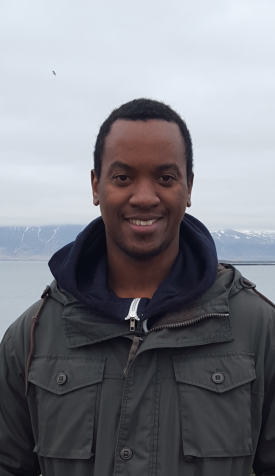UNU-FTP fellow Ricardo Morris completes MSc in Biology at the University of Iceland
Last week, UNU-FTP fellow and scholarship recipient Ricardo Morris of Jamaica successfully completed his Master's of Science at the University of Iceland in marine biology. Mr. Morris was a fellow in the UNU-FTP six month programme in 2010, at which time he specialised in fisheries policy and planning. His thesis was entitled, "Distribution of Queen conch (Strombus gigas) on the Pedro Bank, Jamaica: Descriptive and Predictive distribution models"
Mr. Morris's research involved the creation of a species distribution model for Queen conch, an important species in the Caribbean ecosystem and a valuable resource for economic and social development in the region. The model aimed to describe and predict distribution of the species on the Pedro bank in Jamaica using data from abundance surveys and environmental measurements.
We at the UNU-FTP send warm congratulations to Ricardo, and wish him all the best in his future endeavours.
ABSTRACT "Species distribution models (SDM) are useful tools for describing and predicting species ecological role within its community or ecosystem. They are increasingly becoming important in the context of marine resource management and conservation in light of the the relative difficulty and expense of obtaining quality marine biological and environmental data. SDM have been applied to the marine realm in areas such as marine spatial planning (MSP), prioritizing for the establishment of protected areas, predicting and planning for the impact of non-native species and climate change mitigation. There is an on-going effort by private and public stakeholders to further develop and implement ecosystem based management approaches to Jamaicaʼs marine resources, in particular on socio-economically important species and habitats. In this context descriptive and predictive distribution models were developed for different size and age groups of the commercially important gastropod mollusc, Queen conch (Strombus gigas), on the Pedro Bank Jamaica. Species occurrence data from four abundance surveys (2002, 2007, 2011 and 2015) were modelled against the environmental variables; depth, substrate and primary production using generalized additive models (GAM) and Maxent. Descriptive results revealed that for both juveniles and adults there is a higher tendency toward shallower depths and substrates with relatively high amounts of their marcoalgal food. However, its is substrate complexity rather than specific substrate types that may be most important. Predictive models showed that not all supposedly suitable areas were being occupied by the species, but importantly also suggest priority areas for management of the species and its habitat in the context of the Pedro Banksʼ increasingly multi-use nature."


